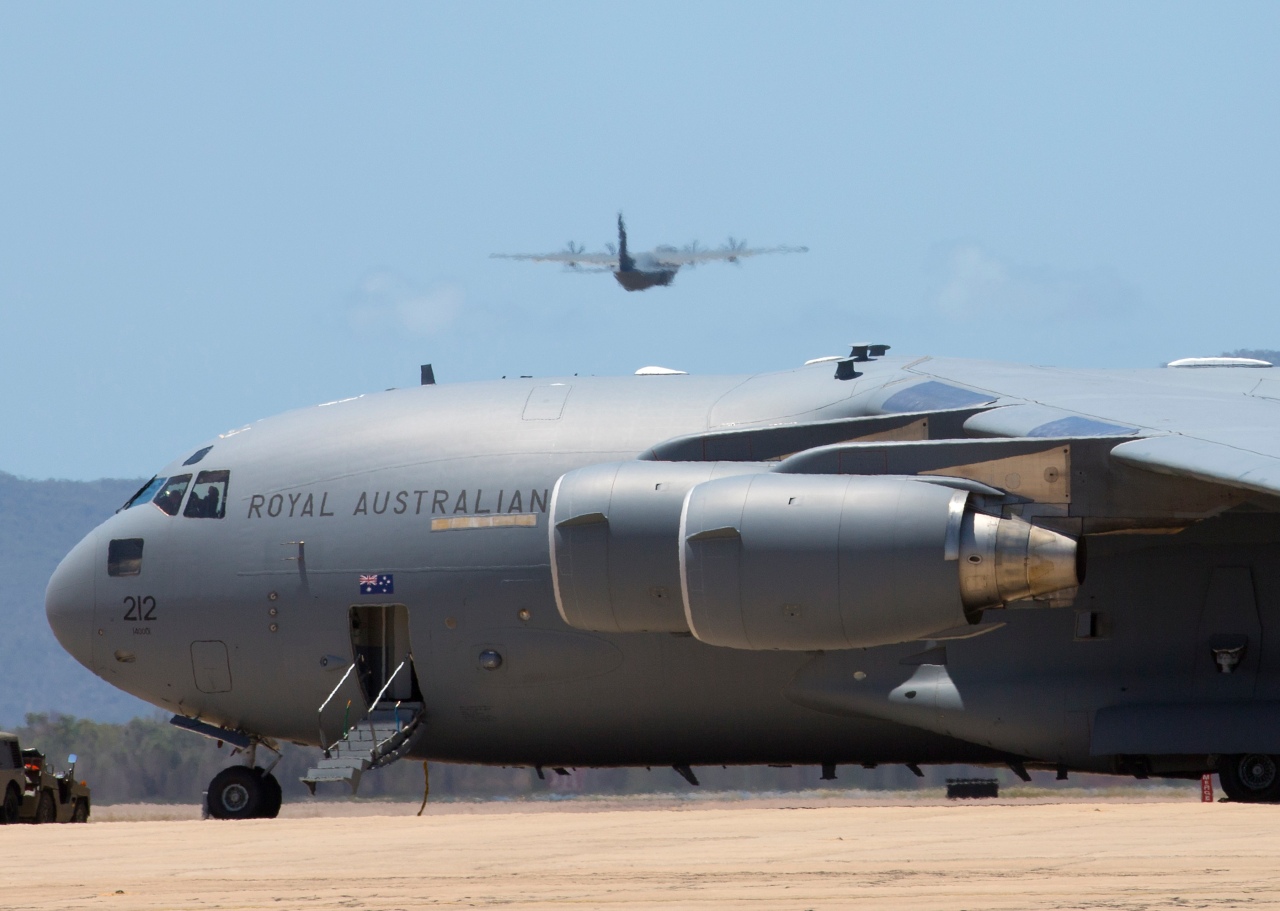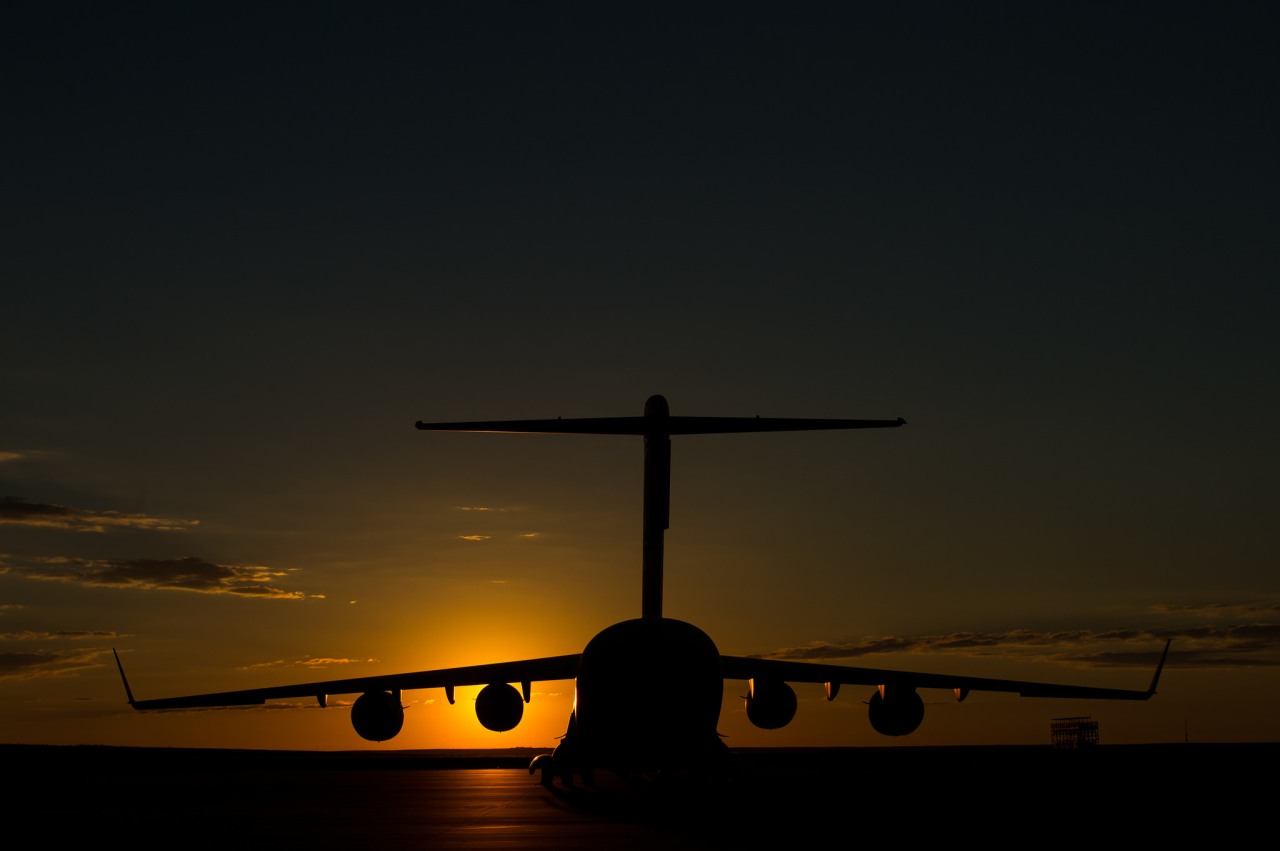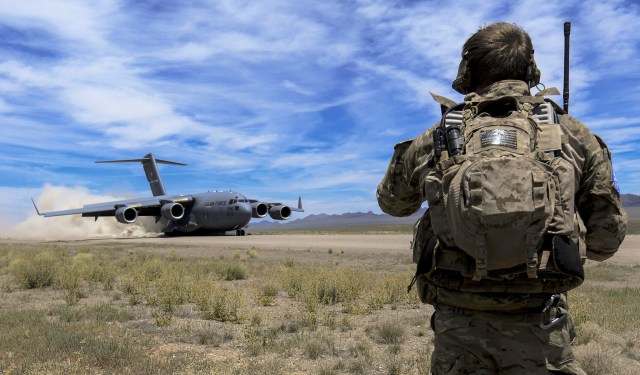By Donna Cain-Riva.
‘ Logistics In War’ and ‘Central Blue’ are jointly publishing the #selfsustain series. We welcome Mrs Donna Cain-Riva to ‘Central Blue’ and ‘Logistics In War’ to provide her valuable insights into how the Royal Australian Air Force is considering the #selfsustain challenges of operating a fifth-generation force in a competitive Indo-Pacific. This post is an adaptation of Mrs Cain-Riva’s presentation at the Williams Foundation’s #selfsustain seminar, held in Canberra on 11 April 2019.
Over the last few years, Logistics Branch – Air Force has pursued a dedicated effort to understand and respond to the sustainment challenges posed by operating a fifth-generation force in an increasingly challenging Indo-Pacific. This post summarises my views on the key challenges this effort has considered, and provides some insight into the Air Force’s response.
In 2030, air power projection locations in the Indo-Pacific, and our air bases across the entire national support base will not be sanctuaries. Future adversaries will have the ability to reach out and touch us anywhere in the world – physically and virtually. Sustaining fifth-generation capabilities in a future conflict will challenge every tenet of the logistics and sustainment enterprise designed to support them – from tooth to tail.
We must look critically at our sustainment and support constructs, and challenge our current paradigms of sustainment policy and practice. Our success depends on our ability to think differently, to think creatively, and to act with agility. We must redefine the notion of ‘self-reliance’ – take a contemporary, and arguably a realistic view, and understand the nuances and inter-dependencies between sovereign and collective self-reliance as part of a global alliance structure.
As the strategic outlook changes, and we introduce fifth-generation capabilities, we have an opportunity to redefine how we can enhance and sustain sovereign Defence capabilities through deep and enduring alliance and regional relationships. An integrated strategy— that identifies the priority capabilities that Australia must be able to sustain or sustainability contribute to— will give us the reach, flexibility and resilience to operate independently or as part of a combined operation in a high-end, high intensity conflict.
The Need to Change our Mindsets
So what does all this mean for sustaining a fifth-generation fight in the Indo-Pacific? For starters, it means moving beyond our current, or what I refer to as our ‘Middle East’ sustainment mindsets. With few exceptions, we have been, and continue to be, successful in sustaining our capabilities on operations. But if we are honest with ourselves, the prevailing threats were asymmetric, and far removed from the National Support Base and domestic Air Force bases.
A central component of the logistics scheme of manoeuvre prior to major operations in the Middle East was the build-up of support forces and infrastructure across the region. These hubs became a network that could be called upon to support a number of different operations, and were augmented by significant coalition, commercial and host nation support. Basing locations for Air Force systems were, for the most part, located in areas of relative safety. Air lines of communication flowed freely across the battlespace. Global supply chains were free to transport goods to agreed points within host nations. ADF supply chains would then distribute supplies across the theatre, largely uncontested.
Contracted commercial platforms supplemented ADF airlift capability and transported equipment directly into theatre. We leveraged coalition contracts for support, including for fuel and force sustenance at major bases. Demand generally did not out-strip supply and our operational rate of effort was tempered by known sustainment limitations. Operational contingencies did not demand more from our sustainment system than it could reasonably satisfy.
Logistics information systems were unaffected by cyber threats and data passed between deployed locations and the national support base with ease. The requirement to highly classify and protect logistics data was limited.
Operation Okra challenged Defence capabilities across the spectrum but it did so in the context of a theatre with established basing, distribution, supply chains and theatre networks. And no one was shooting at us! In sum, we were not self-reliant in the Middle East, but we did not need to be. The future may be different.
Characteristics of Future Conflict
So what are the changes when we look to the future with a focus on the Indo-Pacific? To put some context around the need for enhanced sovereign Defence capability, it is important to discuss the strategic environment; a changing landscape shapes every acquisition and sustainment decision.
In a high-end, high-intensity conflict, adversaries will seek to deny us access to physical and virtual areas of interest. This will likely commence well before the ‘red flag’ goes up. Adversaries will seek to hinder our ability to enter the area of operation; will contest our freedom of operational manoeuvre; will disrupt our supply chains; and challenge our defensive systems with multi-axis effects coordinated across all domains.
The distinction between ‘grey-hull’ and ’white-hull’ warfare will become increasingly blurred. A high-intensity conflict could be initiated with little warning; fought at a considerably faster tempo, and higher levels of risk to capability and the force.
Our air bases, deployed and at home, are likely to come under attack. Vectors may include; disruption to the logistics systems and communication networks, interdiction or sabotage of supplies and services essential for base functions and capability sustainment, and physical threats that will have increased range, speed, accuracy and lethality.
New Ways of Operating
A fifth-generation Air Force will operate differently in this environment. The viability of our new and emerging fifth-generation operating concepts are critically dependant on enhancing our combat support and sustainment capabilities, including enhancing sovereign options. Our advantage can no longer be based on the capabilities we possess, but rather, how we employ them. Agile and adaptive operating concepts will exploit temporal windows of opportunity to project and employ air power. We must build a network of power projection and basing options across the region to enable the necessary operational reach, flexibility and persistence. This must be underpinned by a resilient sustainment network that can rapidly respond to war-fighter needs.
This entails leveraging our natural geographic strengths, building infrastructure, growing regional partnerships, enhancing coalition engagement and cooperation, and developing synchronised sustainment strategies with our allies, as an integrated part of our deterrence posture. Australian Industry has a critical role to play.
We must be confident that we can BASE – FUEL – ARM – FIX – SUPPLY and MOVE the force in a high-end, high-intensity conflict sustainably.
Enhancing sovereign Defence capabilities for Collective Self-Reliance
We do not face these challenges alone. Our coalition partners and allies are equally challenged, and this presents an opportunity to enhance sovereign capabilities within a collective framework. Enhancing sovereign options, through collective self-reliance will help us to mitigate risk and manage our vulnerabilities, and offers Australia Industry exposure to broader markets and higher demand profiles.
Acknowledging Australia’s limited resourcing capacity for self-reliance, we must establish priorities for sustainable sovereign capability development. There is significant opportunity across the combat support, logistics and sustainment enterprise to enhance our collective self-reliance. The following are a few areas I believe worthy of consideration:
Firstly, BASING the force. We must think beyond military bases and consider how we develop a network of power projection locations within the national support base and across the region. Defence is investing significantly in infrastructure and facilities to support the Air Force’s new capabilities. We must continue to modernise and harden our infrastructure, as well as train and exercise to fight for, and recover our bases. Passive defence measures offer an opportunity for innovation. What does the next generation of camouflage, concealment and deception measures look like? How can we leverage emerging technology to rapidly initiate flexible or dispersed operations to preserve and protect the force?
Higher levels of risk may also challenge our high-reliance on contracted personnel to augment combat support forces. Perhaps it is time to reconsider service delivery models in order to ensure these arrangements can rapidly transition from a peacetime to wartime setting.
ARMING the force. The Air Force is pursuing enhanced munitions integration with our coalition partners. Interoperability objectives associated with munition preparation and aircraft loading are the first steps. But Australia could also play a greater role in the global development, production and testing of next generation missile capabilities. Improving trade relationships, combined with our key coalition partners stated objectives to leverage partner capabilities, enable us to challenge current export constraints and extant agreements that may limit our current role.
FUELLING the force. Australia relies heavily on imports for a significant portion of refined petroleum products. Are we confident in the ability of the market to surge and supply if regional stability and security degrades? We must seek to exploit emerging energy opportunities or enhance our sovereign energy production. Investment and innovation in fuel infrastructure, delivery modes, storage capacity, reserve fuel holdings, and diversification of the fuel supply chain are all worthy of further consideration.
SUPPLYING the force. Increasing the surety of supply and service by sustaining our capabilities through increased organic means, with reach back to indigenous and sovereign industrial capabilities, is a noble objective. But is this realistic where complex and diverse global supply chains dominant the landscape? There is significant opportunity to exploit advanced manufacturing and emerging technologies to disrupt traditional and geographically dispersed supply chain constructs, and to minimise the impact of shocks.
We must start by understanding where we carry supply chain risk and vulnerabilities. From a cyber vulnerabilities perspective, a significant portion of Defence supply chains are managed by commercial entities that may not be held to the same cyber security standards as the Department of Defence. Australian industry and the commercial entities that support the production, supply, warehouse and distribution of our equipment have a role to play in becoming more cyber aware.
FIXING the force. Global supply chains present many maintenance and support opportunities for enhanced self-reliance. The Air Force is pursuing enhanced maintenance integration across common platforms with our coalition partners. Interoperability objectives associated with aircraft repair and cross-servicing’s are progressing. But Australia could also play a greater role in supporting regional maintenance hubs, as well as component manufacture, repair, overhaul, and the provision of engineering services.
By 2035 the global pool of F-35’s will be around 3000. As the global support solution continues to mature and evolve, including the establishment of regional maintenance facilities in Australia, there will be many more opportunities for Australian Industry to enhance its role.
MOVING the force. Agile and adaptive deployment objectives will drive smaller expeditionary logistics packages, requiring responsive resupply and distribution to meet dynamic operational needs. We must seek to optimise volumetrically, and exploit advances in technology and automation to develop modular, tailorable, scalable and lean force packages.
COMMAND the force. There are many opportunities to leverage emerging technology and innovation in order to enhance command and control, situational awareness, and to provide visibility of logistics capabilities and resource availability across the battlespace. Enhanced logistics command and control, supported by a common operating picture, will enable the sustainment enterprise to ‘sense and respond’ to dynamic needs. We must exploit and leverage advances in sensing technology, data analytics and artificial and augmented intelligence to predict, anticipate and respond rapidly to operational needs. This will provide us the power to process increasing volumes of complex operational and logistics information generated by fifth generation platforms and systems.
Conclusion
We require a broader understanding of the combat support, logistics and sustainment challenges we face if we are to prevail against increasingly complex and lethal threats. Logistics will be targeted, and our air bases will not be sanctuaries. These are global challenges, and they require a global response. This is an opportunity for Australian industry to expand its role as part of a collective self-reliance framework . We must harness the opportunity to strengthen our coalition and allied partnerships, enhance our relationships and access within the region, build shared capacity and capability; and in turn, enhance our sovereign Defence capabilities.
Mrs Donna Cain-Riva is the Director of Future Logistics Capability – Air Force. The opinions expressed are hers alone, and do not reflect the views of the Royal Australian Air Force, the Department of Defence, or the Australian Government.


